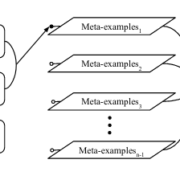Supervised machine learning-based classification scheme to segment the brainstem on MRI in multicenter brain tumor treatment context
Supervised machine learning-based classification scheme to segment the brainstem on MRI in multicenter brain tumor treatment context
Dolz, Jose and Laprie, Anne and Ken, Soléakhéna and Leroy, Henri Arthur and Reyns, Nicolas and Massoptier, Laurent and Vermandel, Maximilien
International Journal of Computer Assisted Radiology and Surgery 2016
Abstract : Purpose: To constrain the risk of severe toxicity in radiotherapy and radiosurgery, precise volume delineation of organs at risk is required. This task is still manually performed, which is time-consuming and prone to observer variability. To address these issues, and as alternative to atlas-based segmentation methods, machine learning techniques, such as support vector machines (SVM), have been recently presented to segment subcortical structures on magnetic resonance images (MRI). Methods: SVM is proposed to segment the brainstem on MRI in multicenter brain cancer context. A dataset composed by 14 adult brain MRI scans is used to evaluate its performance. In addition to spatial and probabilistic information, five different image intensity values (IIVs) configurations are evaluated as features to train the SVM classifier. Segmentation accuracy is evaluated by computing the Dice similarity coefficient (DSC), absolute volumes difference (AVD) and percentage volume difference between automatic and manual contours. Results: Mean DSC for all proposed IIVs configurations ranged from 0.89 to 0.90. Mean AVD values were below 1.5 cm3, where the value for best performing IIVs configuration was 0.85 cm3, representing an absolute mean difference of 3.99% with respect to the manual segmented volumes. Conclusion: Results suggest consistent volume estimation and high spatial similarity with respect to expert delineations. The proposed approach outperformed presented methods to segment the brainstem, not only in volume similarity metrics, but also in segmentation time. Preliminary results showed that the approach might be promising for adoption in clinical use.

